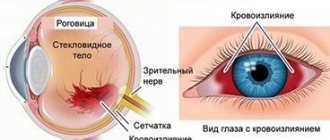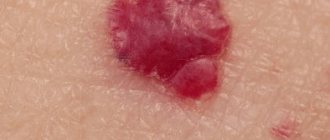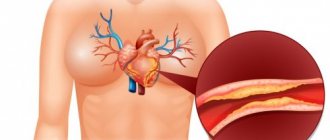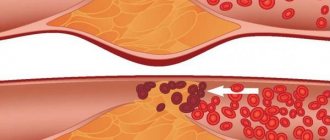Author:
Yakovleva Yulia Valerievna 5/5 (1 rating)
Med.
portal: Causes Symptoms Diagnostics Treatment Advantages of treatment at MGK Prices
Xanthelasmas of the eyelids look like small single or multiple flat yellowish plaques located at the inner corner of the upper (usually) or lower eyelid. Xanthelasmas are benign formations that are not prone to malignancy; their appearance is associated with general disorders of lipid metabolism.
Prices for treatment for xanthelasma
The cost of surgical treatment of xanthelasma starts from 2000 rubles. (in the presence of a single formation up to 5 mm). The final cost of removal will depend on the number and size of formations, as well as the volume of therapeutic and diagnostic procedures performed.
You can find out the cost of a particular procedure by calling (499) 322-36-36 or online using the appropriate form on the website; you can also read the “Prices” section.
Go to the "Prices" section
Make an appointment
Diet
Dietary nutrition is the main method of treating high concentrations of cholesterol in the blood, which results in the appearance of cholesterol plaques and fatty deposits throughout the body.
It is necessary to completely eliminate animal fats from the diet and replace them with vegetable oils, as well as eliminate the consumption of sugar and sweet desserts.
Bread and baked goods made from the highest grades of white flour are also contraindicated, because they not only raise the cholesterol index in the blood, but also increase blood sugar.
It is also necessary to follow the principles of an anti-cholesterol diet:
- Diet: 5-6 times a day, in small portions;
- Each time you eat, you should use no more than 1 - 2 teaspoons of vegetable oils. You can eat 25.0 grams of cow’s butter per day, 75.0 grams of vegetable oils;
- Drink no less than 2000.0 milliliters of water per day;
- Reduce salt intake to 2.0 - 5.0 grams per day;
- Introduce sea fish into your diet 3-4 times a week;
- 60.0% of the total daily diet should be vegetables - fresh and after minor heat treatment, as well as a lot of greens and fresh fruits.
Diet: 5-6 times a day, in small portions
Symptoms
Xanthelasmas of the eyelids are rounded plaques slightly protruding above the surface of the skin, pale yellow in color, and their consistency is soft. The size of such formations can vary from several millimeters to 1.5 cm; the elements themselves can be either single or multiple. In some patients, xanthelasmas may appear as a solid yellowish stripe extending onto the bridge of the nose.
Xanthelasmas in the lower eyelid area (xanthomas) are rarely isolated; they usually occur in addition to the same formations located on the upper eyelid and are a manifestation of xanthomatosis. Patients with xanthelasmas of the eyelids do not present any complaints; the formations are painless and represent mainly a cosmetic defect. Once occurring, xanthomas and xanthelasmas remain for life, very slowly increasing in size.
Manifestation of xanthelasma
The following external manifestations are characteristic of xanthelasma:
- appearance: the shape of a plaque protruding above the skin;
- size: from pea to bean;
- location: often close to the bridge of the nose on one or both eyelids;
- consistency: soft, painless;
- color: yellowish;
- quantity: single or multiple, merging into an uneven tuberous strip;
- speed of spread: appear suddenly and grow slowly, becoming a serious cosmetic problem.
Diagnostics
Patients with xanthelasma of the eyelids need to consult not only an ophthalmologist, but also an endocrinologist and a dermatologist. The examination must include a general blood test, a study of lipid metabolism (level of lipoproteins and cholesterol in the blood serum).
The characteristic appearance of the formations usually does not pose any difficulties in making a diagnosis. In addition to xanthelasmas and xanthomas, the patient is often diagnosed with obesity, hypertension, metabolic syndrome or diabetes mellitus. Xanthelasma of the eyelids must be differentiated from other similar skin diseases (syringoma, pseudoxanthoma), incl. malignant tumors.
Causes of xanthelasma of the eyelids
The cause of the development is considered to be metabolic disorders, most often lipid metabolism, the presence of problems with the heart, liver, pancreas in people suffering from obesity, diabetes, and atherosclerosis. Growth occurs slowly, mostly observed in older women. Can be inherited. They will not disappear on their own, so it is necessary to eliminate them. There are several options.
The plaque is affected by:
- liquid nitrogen for several seconds until the cells are completely destroyed;
- targeted laser, painless, bloodless, without scarring or unpleasant consequences;
- radio waves contactlessly evaporate unsuitable layers;
- promptly using scissors and tweezers using local anesthesia; the edges of the wound are treated with medications or cauterized with electrodes.
In order to prevent a secondary occurrence, you need to look for the abnormalities in the body responsible for this and cure them.
Treatment of xanthelasma of the eyelids
Since xanthelasmas and xanthelomas in most cases accompany lipid metabolism disorders, liver disease, etc., it is imperative to treat the underlying disease. It is recommended to follow a diet limiting the consumption of animal fats and replacing them with vegetable fats. If hypercholesterolemia is detected, drugs that normalize lipid metabolism (statins, lipoic acid, berlition) are prescribed. The use of drugs that normalize liver function (choleretic agents, Essentiale, multivitamins) is indicated.
There is no drug treatment for xanthelasma of the eyelid; the formation (at the request of the patient) is removed using a laser, electrocoagulation or surgery. The intervention is performed under local infiltration anesthesia. During removal, a specialist uses tweezers and miniature scissors to separate the base of the plaque, then treats the skin in the wound area with an antiseptic. If the size of the lesion to be removed is not large, the edges of the wound are treated with a solution of iron albuminate, which promotes effective healing. In the case of a more extensive wound surface, its edges are treated with electric current (diathermy) or cosmetic sutures are applied.
How to get rid of xanthelasma (cholesterol deposits around the eyes)
Have you ever noticed patches of skin with a strong yellow tint on your face, especially in the area around the inner corners of your eyes? This can be a critical sign that cholesterol levels are extremely high, and in some cases it can be an early indicator of primary biliary cirrhosis, a liver disease that causes cholesterol levels to spike.
How to Get Rid of Xanthelasma These yellow, cholesterol-filled spots form due to excessive levels of low-density lipoprotein (LDL or “bad” cholesterol) in your body. This type of cholesterol is extremely bad for your heart and can cause problems such as high blood pressure, heart attack or stroke.
Causes and risk factors More women than men suffer from this disease. People aged 30 to 60 are also at higher risk. A genetic component, such as inherited high cholesterol or familial hypercholesterolemia, also increases the risk of developing this condition.
Other causes and risk factors include: high levels of LDL or bad cholesterol high levels of triglycerides low levels of high-density lipoprotein (HDL or "good" cholesterol) primary biliary cirrhosis, which can spike cholesterol levels hyperlipidemia diabetes high blood pressure obesity poor diet and sedentary behavior life
Symptoms of Xanthelasma
The two main symptoms are: Yellow-orange patches on the skin. These plaques are flat on top, with distinct edges.
Preventing Xanthelasma: Balancing LDL and HDL levels. Reducing triglyceride levels in the blood. Regulates blood lipid levels, including fatty acids. Eating organic and healthy food. An active lifestyle and vigorous cardiovascular workouts that will help burn fat.
Home Remedies for Xanthelasma As mentioned above, xanthelasma itself is not a serious condition, but it can be an early sign of health problems. The first and most important thing you need to do when you notice those yellow plaques on your skin is to make an appointment with your doctor and determine the exact cause of these cholesterol deposits.
You need diagnostic tests, such as a lipid profile blood test, to find out your cholesterol levels. And you should also check your liver.
For the cosmetic aspect, you can see your dermatologist to have these plaques removed. However, this process is likely to be long, tedious and extremely expensive. Additionally, many of the options, such as laser removal or cryosurgery, can have side effects and cause skin damage if not done properly.
You can use a natural approach to correct these imperfections. Here are five simple yet effective home remedies to get rid of xanthelasma naturally.
Method 1: Garlic Raw garlic contains sulfur compounds and natural enzymes that can successfully dissolve and disintegrate cholesterol deposits both when applied topically and internally.
When consumed orally, garlic also prevents cholesterol from sticking to artery walls and helps lower blood pressure.
One-step treatment: Apply fresh garlic juice to the affected areas.
Extract fresh garlic juice and apply on the affected part to get rid of xanthelasma Extract fresh garlic juice and apply on the affected part
Do this once a day for at least 7-10 days to successfully dissolve these cholesterol deposits from under your skin.
Method 2: Castor Oil Cold pressed organic castor oil has anti-inflammatory properties and is rich in fatty acids that can help dissolve hard cholesterol deposits under the skin. Regular use will give you smooth, younger-looking skin, free from any yellowish spots.
Note. Make sure you use organic, hexane-free castor oil.
One-step treatment: Apply castor oil and leave it overnight
Use this natural treatment for at least 2 weeks to successfully get rid of these fatty cholesterol deposits and get your skin back to normal.
Method 3: Chemical Peel You can also use 70% trichloroacetic acid (TCA) peel to get rid of these fatty deposits under the skin. Trichloroacetic acid is a chemical made by combining acetic acid, chlorine and a catalyst.
This chemical peel removes dead skin cells and damages the outer layers of skin to reveal healthy, younger-looking skin underneath. This is a very effective method for extracting and getting rid of xanthelasma plaques from your skin.
Note. This is a chemical peel. Always perform a patch test on your skin before proceeding with application.
One-step treatment: Apply 70% trichloroacetic acid to the skin.
You can do this every 4 weeks to treat xanthelasma superficially
Although 70% trichloroacetic acid has proven to be the most effective treatment, it is a strong dose and may not suit all skin types. If you have sensitive skin, consult a dermatologist to determine the ideal TCA concentration for your skin.
Method 4: Apple Cider Vinegar Raw, unfiltered apple cider vinegar has strong antimicrobial and anti-inflammatory properties. It also contains acetic acid, which helps break down and dissolve cholesterol and other fatty deposits in the blood, liver and under the skin, and prevents acid reflux.
To lower your blood cholesterol and get rid of xanthelasma, you can also drink 1 tablespoon of apple cider vinegar mixed in a glass of warm water every morning.
Step 1: Dilute raw, unfiltered apple cider vinegar with water (1:1).
Step 2. Apply it to damaged areas of the skin. Leave it on for 20-30 minutes, then rinse it off with warm water. Repeat 2 - 3 times a day.
Do this daily for about 2 weeks to dissolve these fat deposits under the skin and get rid of xanthelasma successfully.
Method 5: Diet When it comes to treating xantholasma, your diet is crucial to control your blood cholesterol levels and reduce the appearance of those yellow fatty deposits.
Eating healthy foods also reduces your risk of developing serious heart disease or high blood pressure in the future. Following the broad guidelines below will help you live a long, healthy, xanthelasma-free life.
Foods to Avoid: You should avoid foods that are high in fat, such as: Red meat, fried foods and processed foods that contain artificial flavors and preservatives. Refined foods, especially sugar, baked goods, refined flour and pasta. Milk and other dairy products, including butter, cheese, full-fat yogurt and cream. Junk and fast food including hamburgers, fries, chips, etc.
A diet rich in organic fruits and vegetables is ideal for both getting rid of xanthelasma and leading a healthy, pain-free life. Include the following items in your regular diet to reduce the level of unhealthy fats in your bloodstream: Whole grains, including brown rice, whole grain bread, etc. Oats with soy milk. Garlic, lemon and onion. Blueberries, apples and black grapes. Drink 1 glass of tomato-carrot juice daily. Drink 2 cups of green tea daily
Tips You can also mix 2 tablespoons of onion juice in a glass of water and drink it daily. You can also soak 2 teaspoons of fenugreek seeds in a glass of water overnight and drink it in the morning for 1-2 weeks. Drink at least 2 liters of water daily to detoxify your body and help get rid of xanthalosis plaques.
Based on materials from - fabhow.com Translation and adaptation - Fithacker
Shall we turn on some music to set the mood?
Now playing:
Open Kluber FM website | iOS app | Android app
Advantages of xanthelasma treatment and prices at MGK
By contacting the Moscow Eye Clinic, you can be assured of a quick and reliable diagnosis of xanthelasma of the eyelid and its effective treatment. Removal of xanthelasma of the eyelid can only be performed by a specialist with appropriate professional skills. To avoid possible complications, this procedure should be entrusted to an experienced doctor. At the Moscow Eye Clinic you will be able to undergo all the necessary tests, based on the results of which the attending physician will recommend you the most effective treatment methods. The Clinic employs specialists with extensive professional experience who enjoy well-deserved respect both among colleagues and among patients.
Removal of xanthelasma of the eyelid is performed on an outpatient basis under local anesthesia. During the operation, sterile instruments and disposable consumables are used, which eliminates the risk of infectious complications.
Stages of fight and prevention of xanthelasma
The only reliable way to combat xanthelasma is to eliminate it. Only the doctor will decide which method is preferable based on the specific situation. The laser beam is one of the latest achievements of high-tech medicine. Our clinic is equipped with modern equipment, and the procedure for removing xanthelasma of the eyelids is carried out by experienced professionals. Laser removal is characterized by a minimal risk of relapse, high sterility, low likelihood of injury to adjacent skin and the absence of subsequent inflammation. Contraindications for this highly effective procedure include diabetes, pregnancy, and the presence of dangerous tumor processes.
Stages of the fight against xanthelasma:
- preparation - visiting an ophthalmologist, taking tests, choosing a removal method taking into account the indications;
- destruction of education;
- restoration with the implementation of appropriate appointments and follow-up examinations.
As preventive measures, you need to choose those that are aimed at the normal functioning of the body as a whole.
To prevent xanthelasma you should:
- monitor your weight and achieve its optimal value;
- eat wisely, including fruits, vegetables, foods with beneficial properties in your diet, reduce the consumption of flour, fatty foods, and sweets;
- stabilize your drinking regime, drink at least two liters a day;
- lead a healthy lifestyle, eliminate bad habits, stress, regularly give the body adequate physical activity;
- prevent damage to the skin;
- observe personal hygiene standards;
- strengthen immunity;
- systematically undergo preventive examinations.
Our licenses
Prevention
With an elevated cholesterol index, preventive measures and non-drug therapy methods are interconnected, because they make it possible to avoid the development of the insidious systemic pathology atherosclerosis in the body.
A healthy lifestyle will help get rid of cholesterol plaques on the eyelid, and with an intensive decrease in the cholesterol index, it will completely get rid of this pathology.
Methods of prevention and treatment:
- Quit nicotine addiction;
- Take daily walks in the fresh air, which will increase activity and calm the nervous system;
- Do morning exercises - it starts all metabolic processes in the body;
- Stop drinking alcohol;
- Fight obesity;
- Constantly monitor the blood pressure and blood glucose index and adjust them in a timely manner;
- Follow a healthy diet and constantly monitor your cholesterol levels.
Is it possible not to treat an allergic reaction?
Clinical manifestations in the eye area cause significant discomfort. The condition will worsen with continued contact with the allergen. But even stopping exposure to the irritant does not always provide full recovery.
An integrated approach to the treatment of an allergic reaction: avoiding allergens in combination with taking medications gives a chance for a full recovery and a return to a full life. In addition, timely use of medications that relieve the condition allows one to avoid serious complications when allergies turn from local to systemic3.
Symptoms requiring increased attention:
- Swelling of the entire face;
- Difficulty breathing;
- Swelling of the tongue;
- Increased breathing;
- Increased heart rate;
- Blue face;
- Reduced pressure.
Emergency care for suspected angioedema or anaphylactic shock should begin with calling an ambulance1. Eye allergies rarely lead to such complications. The key role here is played by the duration of exposure to the allergen and proper treatment.
Causes of an allergic reaction
Allergies on the face around the eyes are directly related to the contact of irritants with the skin and (or) the mucous membrane of the eyeball. An excessive response of the immune system occurs not only when an allergen comes into contact with the skin, but also when the body is exposed systemically. Therefore, there are many reasons for the formation of allergy symptoms in the eye area.
Main factors causing the problem:
- Plant pollen during the flowering period (three periods are distinguished: flowering of trees, bushes and grasses, field grasses);
- Room dust containing fungi;
- Animal fur (allergens can be any pets or wild animals);
- Bird fluff;
- Contact lenses;
- Sunlight (the occurrence of a pseudo-allergic reaction);
- Medicines (local drops, ointments, creams or systemic drugs);
- Household chemicals (depending on the composition, there can be either a true or false allergy);
- Cosmetics (any cosmetics, except special hypoallergenic ones, can cause a response from the body).
Finding out the cause of the problem is a necessary step in successfully eliminating clinical manifestations. The task of a person who suffers from an allergy to the skin around the eyes is to understand the mechanism of its occurrence in order to remove it from his life. In some cases, this is enough for a full life.











